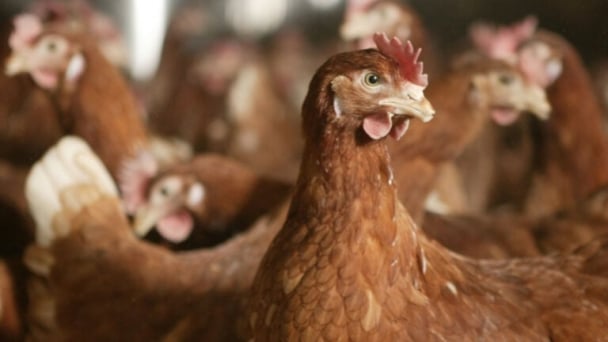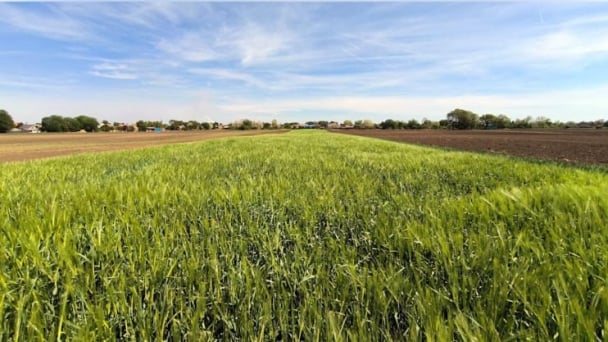June 23, 2025 | 23:07 GMT +7
June 23, 2025 | 23:07 GMT +7
Hotline: 0913.378.918
June 23, 2025 | 23:07 GMT +7
Hotline: 0913.378.918
The following is a non-exhaustive look at some highlights from the last year and how they might impact the overall movement’s progression in the coming months.
US-based specialty finance shop Mad Capital launched its Perennial Fund II, which targets $50 million and received early backing from The Rockefeller Foundation, Builders Vision, and the Schmidt Family Foundation.
Why it matters: Farmers are ready and willing to transition to regenerative agriculture practices but frequently lack access to capital — and the right capital partners. Private credit firms such as Mad Capital have multiplied in recent years to address this gap and advance the spread of regen ag.
Similar aid has taken shape in Europe. Last year, alternative financier HeavyFinance announced a new €50 million ($54 million) fund to support small- and medium-sized farmers in Europe through the regenerative agriculture transition.
Why it matters: Per a 2023 survey by the European Commission, 83% of all farmers in the EU have experienced increased production costs but only 12% have “significantly” increased their selling prices. The total financing gap for EU agriculture is now €62 million ($67 million).
“Farmers have really struggled in recent years,” HeavyFinance CEO Laimonas Noreika told AgFunderNews. “As well, we have incoming green policies from EU regulators and an additional push for farmers to convert grain lands to grasslands. So now more than ever, farmers need additional capital.”
Multiple funds and grants now exist for regenerative agriculture projects. One such is natural asset manager Sustainable Land Management (SLM), which reported in 2024 that its assets under management (AUM) had grown 40% year on year across its different funds.
Why it matters: “There are far more investors who want to invest in regenerative agriculture and forestry, and we see that with AUM growing by 40% year on year,” SLM managing partner Paul McMahon told AgFunderNews at the time. “It’s certainly a feeling of achievement on our side that we’re getting backing for something we’ve been talking about for quite some time.”
Down in Latin America, UK-based Astarte Capital Partners, a global firm that focuses on real assets, kickstarted a partnership with Chile-based alternative investment manager Toesca to establish a regenerative agriculture-focused investment platform for permanent crops in Chile and the broader Latin America region.
The Toesca Permanent Crops II fund will be part of the Astarte Platform and will invest $350 million in a portfolio of solutions for permanent crop production.
Why it matters: Permanent crops such as fruit and nut trees are rising in popularity due to shifting consumer diets. Chile is a leading exporter of many different permanent crops with strong access to global markets; success in this endeavor could give the whole region a boost.
There was no shortage of corporate commitments around regenerative agriculture in 2024.
Notably, ADM took its regen ag initiative from pilot- to large-scale programs across the US, with the goal of transitioning at least 4 million by 2025. ADM also launched a new company, Gradable, in partnership with Farmers Business Network, to connect grain buyers with farmers using regenerative practices in order to meet growing demand for sustainably produced food items.
Why it matters: ADM has around 60,000 farmer relationships across the US, making its potential reach huge when it comes to transitioning farmers.
Other agrifood corporates with ambitious regenerative agriculture plans include General Mills, PepsiCo, Ahold Delhaize, and Nestlé.
A big challenge in 2025: extracting actual commitments and progress from PR-friendly jargon. Regenerative agriculture has no set definition and thus is made up of different practices and beliefs depending on who’s talking. And while there’s no such thing as “one size fits all” in regen ag, the loose guidelines can open the door for greenwashing if not managed properly.
Impact company Nzatu demonstrated one such model in 2024 with the release of its Njuki coffee to the US. Nzatu works with farmers in Africa on implementing regenerative practices before sending the raw coffee to Parma, Italy-based Artcafé, which roasts the coffee and manages distribution across Europe and Asia. A third party, US-based e-commerce operation Urban Afrique, handles North American distribution.
Another company, GoodSAM, is employing a “direct trade” model that cuts out the middlemen to work directly with growers and their farmer associations. GoodSAM works with these groups to implement sustainable farming practices and also ensure the financial gain gets back to the farmers themselves.
Why it matters: There are 600 million smallholder farmers in the world, and the success of global food security depends to a large degree on these operations. Regenerative ag models that can teach earth-friendly practices while providing monetary benefits are essential to this success.
One of the more challenging tasks heading into the new year is likely to be around consumer adoption of regenerative agriculture. Multiple studies released in 2024 found that a large majority of consumers may not be willing to pay for the transition via higher food prices — regardless of any environmental benefits.
Still others don’t actually know the term “regenerative agriculture”; many of those that do struggle to explain what it actually entails.
The bottom line: There’s much work left to do when it comes to educating consumers on both what regenerative agriculture is (and isn’t) as well as its benefits to not just the planet but individual human health. This is certainly one challenge for which there is no quick technology fix.
AFN

(VAN) Research has shown that Hy-Line brown hens may be better suited for cage-free production based on overall greater egg production and other quality metrics.
![Turning wind and rain into action: [9] Digitizing hydrometeorological data in response to climate change](https://t.ex-cdn.com/nongnghiepmoitruong.vn/608w/files/news/2025/06/17/z6704423696987_15fd32ffc26d590d204d520c9dac6786-nongnghiep-165943.jpg)
(VAN) Farmers have begun accessing hydrometeorological applications to adjust their cropping schedules, aiming to ensure productivity and adapt to climate change.
![Turning wind and rain into action: [8] Real-time salinity detection and early warning technology](https://t.ex-cdn.com/nongnghiepmoitruong.vn/608w/files/news/2025/06/17/z6704423696987_15fd32ffc26d590d204d520c9dac6786-nongnghiep-151127.jpg)
(VAN) Thanks to the integration of modern hydrological-hydraulic models, remote sensing technologies, and artificial intelligence, the accuracy of hydrological forecasting has significantly improved.
![Turning wind and rain into action: [7] Early disaster warnings help marine farmers minimize losses](https://t.ex-cdn.com/nongnghiepmoitruong.vn/608w/files/news/2025/06/17/z6704423696987_15fd32ffc26d590d204d520c9dac6786-nongnghiep-142942.jpg)
(VAN) In recent years, thanks to early disaster warnings and forecasting, marine farmers in Khanh Hoa province have been able to reduce risks and losses, thereby improving production efficiency.
![Turning wind and rain into action: [6] ‘Four on-the-spot’ disaster management software](https://t.ex-cdn.com/nongnghiepmoitruong.vn/608w/files/news/2025/06/17/e5a48259d6a262fc3bb3-nongnghiep-183800.jpg)
(VAN) By simply activating the scenario on the disaster management software, the relevant authorities immediately know how many households need to be evacuated, where to evacuate them to, and by what means of transportation…
![Turning wind and rain into action: [5] Hue applies modern technology in disaster forecasting](https://t.ex-cdn.com/nongnghiepmoitruong.vn/608w/files/news/2025/06/17/z6704423696987_15fd32ffc26d590d204d520c9dac6786-nongnghiep-093938.jpg)
(VAN) In Hue city, modern technology has recently been applied in meteorological and hydrological forecasting and warning, helping to reduce the damage caused by natural disasters.

(VAN) A cutting-edge farming technique being implemented on an experimental ranch in Arizona's Sonoran Desert has already saved a billion gallons of water over five years, according to Civil Eats.